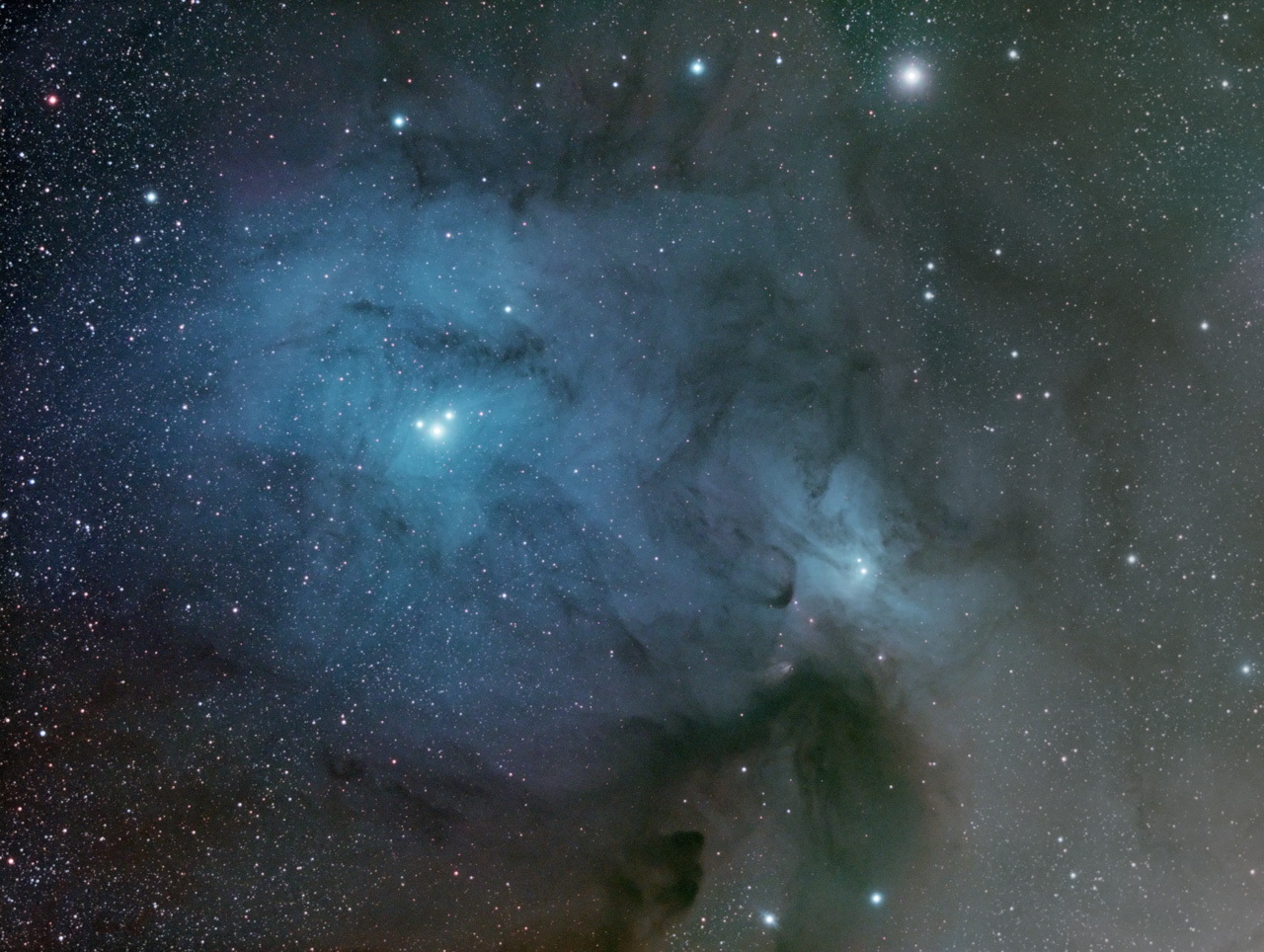Amateur astronomers in the Portland area have had to contend with bad weather for the first half of the year, but it shifted dramatically last weekend, and we were finally able to make a trip to a dark sky location. For me it was even more special because I hadn’t done any imaging at all this year prior to this. The object above is the Rho Ophiuchi Nebula, captured from Goldendale, WA. I’ve shot this before, but this version is definitely better, even though I haven’t yet put a lot of effort into processing it. I think that a bit more subtle detail can be brought out.
Rho Oph is the group of 3 bright stars left of center. Technically, I suppose that it would be just the brightest of the three, but to the naked eye they appear to be a single star, so at least from a historical perspective, the name applies to the group. The region is also know as IC4604, and the smaller bright region to the right is IC4603. Both of them are reflection nebulae, meaning that they consist of dust that reflects the light of surrounding stars. Because these stars are predominantly young, hot stars, they are very blue, and that is the color that we see. In reality, this dust is just brown – like most dust is. In parts of the image we see dark shapes, especially around IC4603. These “dark nebulae” also consist of dust clouds, but in this case they are in front of the stars, so they block the light rather than reflecting it.
I chose this target mainly because this is the best time of year to shoot it. In fact, maybe the ONLY time you can hope to get a good shot of it from around here because it is so far south. The Summer solstice is when Earth’s tilt is most favorable for southern sky objects. The problem with an object so far south is that it is not very high above the horizon, which means that you are looking through a lot of air, and that usually means a lot of image-distorting turbulence, but in this case it was surprisingly stable.
It occurs to me that this image was captured and processed with techniques and tools that could now be called “old school” or “outdated”. The camera (ASI1600MM) has a CMOS sensor, but is now a bit old. Everything else is considerably older: MaxIm DL for capture software, CCDStack 2 for calibration and stacking, and a very old version of Photoshop for post-processing. The only part of it that I’ve kept up to date (more or less) is the PHD guiding software. PHD now supports multi-star guiding, which does significantly improve the guiding performance, and that directly contributes to a sharper image. I have been planning to move to a more modern capture package (something called “NINA”), but haven’t decided on a direction for processing software.
